Bishop's Hat Epimedium grandiflorum f. violaceum

ABOUT
Epimedium grandiflorum f. violaceum, commonly known as the violet fairy wings or bishop's hat, is a graceful perennial plant known for its striking flowers and attractive foliage. The leaves of this plant are heart-shaped with a spiny-toothed edge, often emerging with a reddish tint before maturing to a fresh green. In autumn, the foliage can turn to a stunning red or bronze, providing year-round visual interest. The flowers are the standout feature of the violet fairy wings; they are shaped like little pixie caps or bishop's mitres. The blossoms have spurs that project backward from the petals, and they come in a variety of shades, with this particular form presenting flowers in an enchanting violet hue. Blooms dangle delicately from wiry stems that arch above the leafy mounds in the spring. The violet fairy wings have a graceful and airy appearance, adding a light touch to the garden landscape. They form clumps that can be utilized for their textural contrast along with their striking color. The decorative seed pods that follow the flowers also provide additional ornamental value. When in bloom, the plant is a magnet for pollinators such as bees and butterflies, adding to its charm and utility in a garden setting. Despite its delicate looks, it's a hardy and resilient plant capable of enduring through a range of conditions.
About this plant
 Names
NamesFamily
Berberidaceae
Synonyms
Large-flowered Epimedium, Violet Epimedium, Longspur Epimedium, Bishop's Hat, Barrenwort
Common names
Epimedium grandiflorum var. violaceum, Epimedium violaceum, Epimedium grandiflorum f. violaceum.
 Toxicity
ToxicityTo humans
Bishop's Hat is generally considered non-toxic to humans. There is no significant evidence to suggest that ingesting this plant would result in poisoning. Therefore, no symptoms of toxicity are generally expected. However, as with any plant, individual allergies or reactions could occur, so it's advisable to be cautious with plants that are not typically consumed as food.
To pets
Bishop's Hat is not known to be toxic to pets such as dogs and cats. There are no well-documented cases of poisoning from this plant in the pet literature, hence no specific symptoms of poisoning are generally associated with its ingestion. As with humans, pets may have individual sensitivities, but under normal circumstances, this plant is not a source of concern regarding pet toxicity.
 Characteristics
CharacteristicsLife cycle
Perennials
Foliage type
Deciduous
Color of leaves
Green
Flower color
Violet
Height
1 foot [30 cm]
Spread
1 foot [30 cm]
Plant type
Herb
Hardiness zones
5
Native area
Japan
Benefits
 General Benefits
General Benefits- Aesthetic appeal: The Epimedium grandiflorum, commonly known as the Bishop's Hat, produces vibrant purple flowers that add color and visual interest to garden spaces.
- Drought tolerance: Once established, the Bishop's Hat is relatively drought-tolerant, making it a suitable choice for gardens in regions with limited rainfall.
- Ground cover: With its dense growth habit, the plant provides excellent ground cover, suppressing weeds and reducing soil erosion.
- Shade tolerance: The Bishop's Hat is well-suited to shady areas, where many other plants may struggle to grow, thus increasing planting options for gardeners with less sunny landscapes.
- Low maintenance: The plant generally requires minimal care once established, making it a good option for gardeners looking for low-maintenance landscaping plants.
- Attracts wildlife: The flowers of the Bishop's Hat can attract pollinators such as bees and butterflies, enhancing biodiversity in the garden.
- Long blooming season: The plant has a long flowering period, which can provide visual interest in the garden throughout the growing season.
- Winter interest: After the leaves fall, the wiry framework and seed pods of the Bishop's Hat can add textural interest to winter gardens.
- Deer resistance: The Bishop's Hat is often resistant to browsing by deer, making it a good choice for areas where deer predation is a problem for plants.
 Medical Properties
Medical Properties- Libido Enhancement - Epimedium grandiflorum, commonly known as "horny goat weed," is traditionally used to increase libido.
- Erectile Dysfunction - It is used in traditional Chinese medicine for the treatment of erectile dysfunction.
- Osteoporosis - It contains icariin, which is thought to promote bone health and is researched for its potential in preventing or treating osteoporosis.
- Menopausal Symptom Relief - It may be used to alleviate symptoms related to menopause, such as hot flashes and night sweats.
- Anti-inflammatory Effects - The plant has been traditionally used to reduce inflammation.
- Immune Modulation - It is believed to have immune-boosting properties.
- Cardiovascular Health - Some components of the plant are investigated for their potential benefits to cardiovascular health.
- Antioxidant Properties - It contains flavonoids with antioxidant activity, which may help protect the body from oxidative stress.
 Air-purifying Qualities
Air-purifying QualitiesThis plant is not specifically known for air purifying qualities.
 Other Uses
Other Uses- Ground Cover: Epimedium grandiflorum f. violaceum, commonly known as Bishop's Hat, can function as a ground cover in shaded garden areas due to its dense foliage.
- Drought-Resistant Planting: Bishop's Hat can be used in landscapes that require plants with low water needs once it's established.
- Fall Color Interest: The leaves of Bishop's Hat often turn to attractive shades of red and gold in autumn, providing seasonal interest in the garden.
- Winter Garden Texture: Even in winter, the evergreen varieties of Bishop's Hat add texture and color to a garden palette.
- Naturalizing Effect: Bishop's Hat can be planted to create a 'wild' garden look or to fill spaces in woodland gardens and give a more naturalized feel.
- Erosion Control: Because of its ability to form a dense mat, Bishop's Hat can be used to help control erosion on slopes or banks.
- Border Planting: Its attractive foliage and delicate flowers make Bishop's Hat suitable for border fronts or edges in garden design.
- Container Gardening: Bishop's Hat can be used in shaded container gardens to bring color and life to patios or balcony gardens.
- Companion Planting: Bishop's Hat complements other shade-loving plants such as hostas and ferns, creating diverse textures and layering in garden beds.
- Fairy Gardens: Due to its small, delicate appearance, Bishop's Hat works well in miniature fairy garden designs.
Interesting Facts
 Feng Shui
Feng ShuiThe Bishop's hat is not used in Feng Shui practice.
 Zodiac Sign Compitability
Zodiac Sign CompitabilityThe Bishop's hat is not used in astrology practice.
 Plant Symbolism
Plant Symbolism- Love & Attraction: Known by the common name "Bishop's Hat," Epimedium grandiflorum f. violaceum is often connected to love and attraction due to its delicate and enchanting flowers that are thought to resemble fairy wings, inspiring thoughts of whimsy and romance.
- Vitality & Longevity: This plant is valued in traditional Chinese medicine for its purported health benefits, symbolizing a life of vitality and longevity.
- Overcoming Challenges: The robust nature in which this plant grows in challenging conditions is symbolic of resilience and the ability to overcome obstacles.
- Protection: The Bishop's Hat is also believed to offer protection against negative energies and misfortune, echoing the defensive role of an actual bishop's headwear.
 Water
WaterBishop's hat requires regular watering to maintain evenly moist soil, especially during the growing season in spring and summer. It is best to water it once or twice a week depending on the weather conditions; more frequently during dry spells and less during rainy periods. Ensure that the soil is well-draining to prevent waterlogging. Approximately 1 gallon of water per week should be sufficient for an established plant in moderate climates. Reduce water intake in the fall and winter when the plant is dormant.
 Light
LightBishop's hat thrives in partial to full shade, making it an excellent choice for woodland gardens or shaded areas beneath deciduous trees. It can tolerate some morning sunlight but should be protected from the harsh afternoon sun to avoid scorching its delicate leaves.
 Temperature
TemperatureThe ideal temperature range for Bishop's hat is between 50°F and 75°F. It is a hardy plant that can tolerate a range of temperatures and can withstand cold down to -10°F. However, they perform best when not exposed to extreme heat above 80°F or sudden temperature fluctuations.
 Pruning
PruningPruning Bishop's hat is primarily done to remove dead or damaged foliage and to shape the plant. The best time for pruning is in late winter or early spring before new growth begins. Cut back the old foliage to maintain a tidy appearance and stimulate healthy new growth. This task only needs to be done annually.
 Cleaning
CleaningAs needed
 Soil
SoilThe Bishop's Hat requires well-drained soil rich in organic matter, with a slightly acidic to neutral pH of 5.5 to 7. A mix of garden soil, peat moss, and perlite or sand promotes good drainage and aeration.
 Repotting
RepottingThe Bishop's Hat should be repotted every 2 to 3 years to refresh the soil and accommodate root growth, preferably in the spring before new growth starts.
 Humidity & Misting
Humidity & MistingThe Bishop's Hat thrives at moderate to high humidity levels, around 50% or higher, but is also adaptable to the average room humidity.
 Suitable locations
Suitable locationsIndoor
Place Bishop's Hat in indirect light, keep soil moist, and ensure high humidity.
Outdoor
Plant Bishop's Hat in partial shade, moist soil, mulch well.
Hardiness zone
4-8 USDA
 Life cycle
Life cycleEpimedium grandiflorum f. violaceum, commonly known as Bishop's hat, begins its life cycle with seed germination in spring, often facilitated by moist, well-drained soil and cool temperatures. The seeds develop into small rosettes of heart-shaped leaves, which are initially bronze or red, turning green as they mature. In the second year, the plants produce flowering stems that bear delicate, spurred violet flowers, typically blooming in mid to late spring. After pollination, often by bees, the flowers develop into dry, capsule-like fruits, which release seeds when fully ripe. The plant then goes through a period of vegetative growth, where it forms dense clumps with expanding foliage. In winter, the leaves may persist or die back, depending on the climate, but the rhizomes (underground stems) survive to sprout new growth in the following spring.
 Propogation
PropogationPropogation time
Spring to early summer
The most popular method for propagating Epimedium grandiflorum f. violaceum, commonly known as Bishop's Hat or Fairy Wings, is by division. This process is best undertaken in late summer to early fall, when the plant is not in active growth. To propagate by division, carefully dig up an established clump and use a sharp knife or spade to divide the root mass into smaller sections, ensuring that each new section has a fair amount of roots and at least one growth bud. These divisions should then be replanted at the same depth they were growing previously, spaced about a foot (roughly 30 centimeters) apart to allow for ample growth. Water the new transplants well to help establish them. Divisions typically take root and adapt to their new location quickly, making this an efficient and effective way to propagate Bishop's Hat.
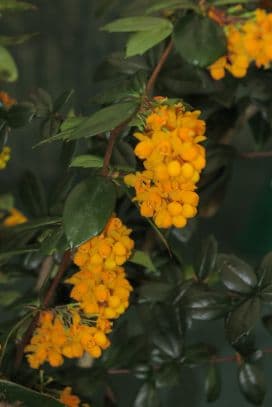
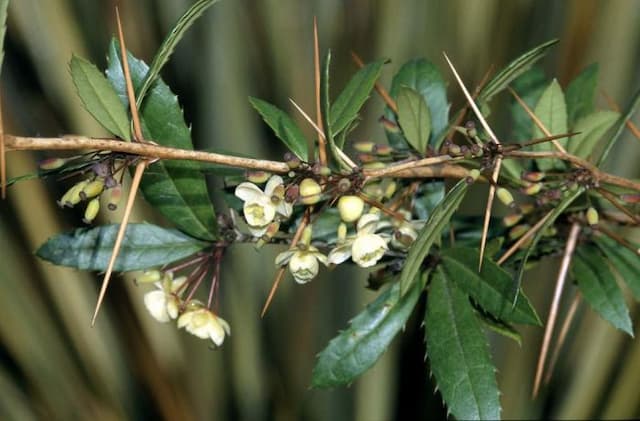
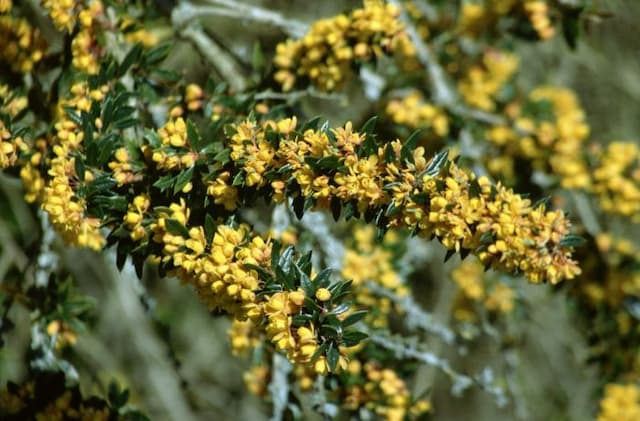
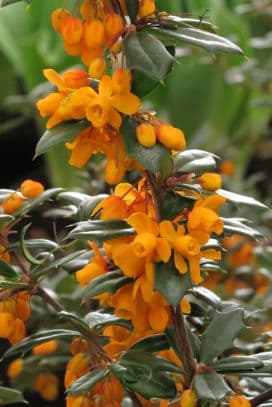
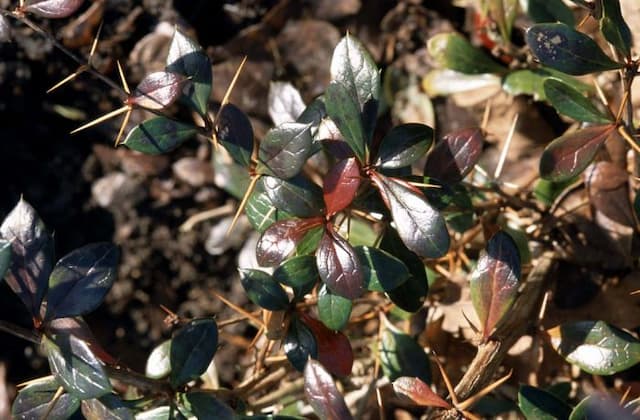


![Japanese barberry [Bonanza Gold]](/_next/image?url=https%3A%2F%2Fplants-admin.emdemapps.com%2Fimages%2Fplants%2F%2Fimages%2F604b5385e413f.png&w=640&q=75)

